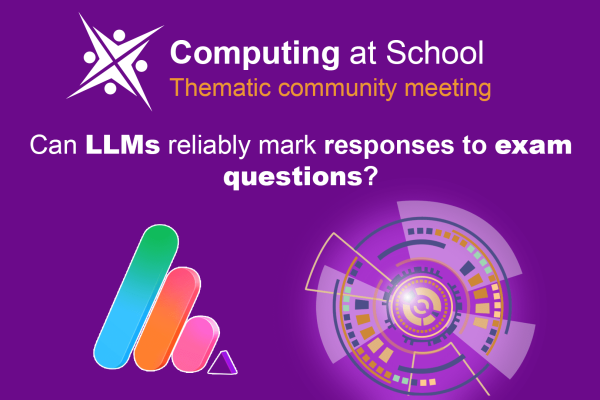A New Chapter for UK Teachers, But Only If We Read Beyond the Headlines
AI tools in UK classrooms are entering a new phase, backed by the Department for Education’s official guidance. “Teachers can now use AI to mark work,” some claimed. But as any experienced educator knows, the real story is rarely in the headline. It’s in the nuance, the quiet footnotes, the lived realities of the classroom. AI tools in UK classrooms are no longer a future concept, they’re here, and now officially supported by government guidance.
This blog is written not to echo hype, but to offer clarity.
Yes, the UK government has taken a meaningful step, it’s officially recognised that AI has a place in education technology. But it’s not about outsourcing your professional judgment. It’s about creating a framework so teachers like you can explore teacher AI tools safely, with training, support, and most importantly, control.
The real question isn’t “Can AI mark?” It’s “Can AI help teachers reclaim the time and energy to do what matters most, teach, connect, and inspire?”
You can access the full guidance set released by the DfE here: DfE’s AI in education guidance collection
Let’s unpack what’s changed, what hasn’t, and what this really means for your classroom.
Table of Contents
What the DfE’s New Guidance Actually Says, And Why It Matters
Beneath the headline noise, the UK Department for Education’s new guidance, released on 10 June 2025, marks a calm but significant moment: it officially opens the door for AI in classrooms, not as a directive, but as a support system.
This is not about forcing AI into lesson plans. It’s about giving teachers the space, language, and confidence to start exploring AI tools for teachers on their own terms.The materials, developed in collaboration with the Chiltern Learning Trust and the Chartered College of Teaching, include:
✅ Video interviews with real educators already testing AI in their schools
✅ Clear guidance on safeguarding, data protection, and intellectual property
✅ Practical templates and policy suggestions
✅ A certification pathway for those who want formal recognition
What’s striking isn’t the content alone, it’s the tone. The guidance doesn’t tell teachers what to do. It trusts teachers to lead this change thoughtfully, with full professional judgment intact.
And that matters. Because trust is where real transformation in digital education begins.But for this shift to take hold, teachers don’t just need access.
They need time.
They need examples.
They need peers to learn with.
In other words: the guidance is a foundation. Whether it becomes real change, that’s up to how schools support their staff next, and how they build the confidence to explore these tools responsibly. That’s exactly where we’re heading next. This foundation is crucial for integrating AI tools in UK classrooms in a safe, scalable way.

From Caution to Confidence – What the New AI Guidance Really Offers
If the DfE’s announcement marked a turning point, the guidance itself aims to walk teachers through that curve, not with sweeping promises, but with quiet reassurance and practical support.
This isn’t a “how to automate your marking” manual. It’s a scaffolding for safe, informed experimentation. Developed by educators, for educators, the materials include video explainers, case studies, and clearly defined scenarios for using AI in education responsibly, all rooted in the realities of UK schools.
As the Chartered College of Teaching states:
“The only way to address AI risks is for the workforce to be confident and competent in its use.” – Dr. Cat Scutt MBE, Chartered College of Teaching
Confidence, not compliance, is the goal here. Teachers are not being told to use AI, they’re being given the choice, the training, and the frameworks to explore it at their own pace.
The guidance also explicitly reinforces a core value:
“AI should not and cannot replace teachers’ professional judgment, nor the relationships they build with students.” – Department for Education, June 2025
This news report offers a simplified, but slightly misleading, headline on the BBC coverage of AI marking in schools.
It’s a crucial reminder that this isn’t a handover, it’s a toolkit for integrating education AI tools with intention.
Coming up next, let’s look at where these tools are already in use, and what early adopters in UK classrooms are actually doing with them.
Early Adopters, Real Classrooms – What’s Actually Working?
It’s one thing to read a policy paper. It’s another to see what happens when the theory meets the timetable.
That’s why the DfE guidance includes short case studies, snapshots of schools across England quietly testing artificial intelligence in education in ways that support, not supplant, teaching.
For example, at Denbigh High School in Luton (part of the Chiltern Learning Trust), teachers used AI to generate draft lesson materials. But they didn’t stop there. They critically reviewed every AI suggestion, tweaking tone, content, and scaffolding to suit their students’ actual needs. The AI was a starting point, not a script.
“It helped save time on planning, especially for non-specialists. But we always adapt the output, nothing goes straight to students.” – Denbigh High School, Case Study (DfE Guidance, 2025)
Other schools trialled AI to support EAL learners by simplifying texts or generating multiple reading levels for the same topic, again, with human oversight and ethical clarity baked in.
What stands out in all these examples? No hype. No shortcuts. Just careful, practical use of teacher AI tools where it makes sense, and firm boundaries where it doesn’t, a theme that directly links to the upcoming section on safeguards and responsible AI use. Just careful, practical use of teacher AI tools where it makes sense, and firm boundaries where it doesn’t.
Some schools are already trialling AI for simple, repetitive tasks, generating quick quiz questions, sorting vocabulary by difficulty, or creating varied sentence starters for writing practice. It’s a small but meaningful shift. As discussed in our blog on GCSE revision strategies, these tools aren’t about reinventing the wheel , they’re about giving teachers back precious minutes, so they can focus on real teaching.
Next, let’s explore why this cautious, values-driven approach is more important than ever, especially as students themselves begin to explore AI on their own terms.
What Safeguards Are Being Recommended – And Why They Matter
The UK’s new AI guidance doesn’t just open the door to experimentation, it draws a clear line around what responsible AI use in education should look like.
That matters. Because as much as AI promises efficiency, it also comes with risks: data misuse, biased outputs, blurred lines between human and machine judgement. And in classrooms, where trust is everything, those risks feel amplified.
The guidance recognises this and lays out practical safeguards built around three pillars:
🛡️ 1. Human Oversight Must Remain Central
AI tools can assist, but they must never make final decisions on their own. Whether it’s providing feedback or generating lesson plans, the teacher remains in control, and accountable. This is a direct counter to narratives that AI can “replace” marking or automate judgment.
“AI should support, not substitute, professional judgement.” – Department for Education, 2025 Guidance
🔐 2. Data Protection and Safeguarding
The materials emphasise the importance of understanding what data AI tools are using, and how it’s stored, shared, or processed. Schools are encouraged to run checks on tools and avoid anything with vague or missing privacy documentation.
This is especially crucial when tools are used by students. Whether it’s an AI chatbot or an adaptive quiz app, there must be clear protocols in place to protect pupils’ data and wellbeing.
⚖️ 3. Fairness, Bias & Transparency
The guidance warns that some AI systems, trained on biased datasets, may reinforce stereotypes or exclude diverse perspectives. Teachers are encouraged to critically review outputs and teach students to question what AI presents as ‘fact’.
There’s also a strong push for transparency, not just in how tools work, but in how they’re used. Parents, governors, and students should all know when AI is part of the learning process.
These aren’t just legal checks. They’re ethical guardrails, a way to make sure that in chasing innovation in education technology, we don’t lose sight of what good teaching looks like: care, fairness, and critical thinking.
For more in-depth CPD materials and AI guidance, explore the Chartered College of Teaching’s AI hub: AI guidance from the Chartered College.In the next section, we’ll look at why this guidance doesn’t ask teachers to start from scratch, and how it actually builds on what many UK educators are already doing.

How This Aligns With What UK Teachers Are Already Doing
If this new guidance feels overwhelming, here’s the reassuring truth: many UK teachers are already putting it into practice, often without realising it.
Across classrooms, from Lincolnshire to Luton, teachers have been experimenting with education AI tools to help with planning, personalisation, and admin. What the Department for Education has done is validate those early efforts, and give them a framework to grow.

✅ Lesson Planning with Guardrails
Teachers using AI to brainstorm lesson starters or generate scaffolded questions are already applying the principle of human-in-the-loop. They prompt, review, adapt, and improve. This mirrors the guidance’s core message: use AI as an assistant, not an authority.
✅ AI-Literate Classrooms
Some schools have started exploring AI literacy as part of digital citizenship programmes, introducing students to ChatGPT or image generators, not to do their work, but to understand how the tools work and why they must be used responsibly. This aligns with the guidance’s emphasis on preparing young people for a tech-rich world.
✅ Sensible Safeguarding
We’ve seen SLTs trial generative tools only after a DPIA (Data Protection Impact Assessment) was completed. Some schools maintain an internal ‘AI use register’, recording which tools have been trialled and what checks were done. These aren’t requirements, but they’re emerging best practices that the guidance encourages.
🗣️ Real Voices:
“We didn’t need permission to try it, but this helps us know we’re not doing anything wrong.”
– Head of Digital Strategy, Secondary School, West Midlands
“The best bit was seeing that what we already started doing, cautiously, is now supported.”
– Primary teacher, Manchester
This isn’t a call for radical change. It’s a chance to connect the dots between what you’ve quietly been doing and what the system is now officially backing.
Final Thought – The Guidance Is Just the Start. The Conversation Is Ours to Shape
The DfE’s new guidance doesn’t have all the answers, and it never claimed to. But it gives schools something we’ve been missing: a shared starting point. A permission slip to begin exploring, carefully, confidently, and in community.
There’s no one-size-fits-all approach here. AI will look different in a rural primary school than it will in a large academy trust. That’s not a weakness, it’s the reality of education. What matters is that we now have a framework to build from, not guesswork to battle through.
And most importantly, this moment invites teachers back into the centre of the conversation. Not as passive recipients of tech, but as thoughtful, skilled professionals shaping how artificial intelligence in education serves learning, not the other way around.
Because in the end, it won’t be a headline, a chatbot, or a piece of code that transforms a child’s learning. In future blogs, we’ll continue exploring how schools across the UK are navigating this shift, and where the conversation is heading next. It will be a teacher.
And teachers now have a little more clarity, a little more backing, and a lot more reason to speak up, test thoughtfully, and help shape the path forward.
Further Reading and Resources for Educators
- 📌 Apply for the DfE EdTech Impact Testbed Pilot – Evaluate innovative technologies in your school or college.
- 🕒 Social media time limits for children under review – What it could mean for digital literacy.
- 💷 Spending Review 2025: What it means for schools – Summary from Schools Week.
- 🌱 Low-carbon websites and digital carbon footprints – Watch Scott Stonham’s Jisc session.
- 👩💻 Coding degrees and graduate employment challenges – Article via Futurism (shared by Ben Williamson).
- 🎠 Everything to Play For – New Play Commission Report – Reclaiming children’s right to play.
- 📚 How to revive reading for pleasure – New National Literacy Trust report and recommendations.




